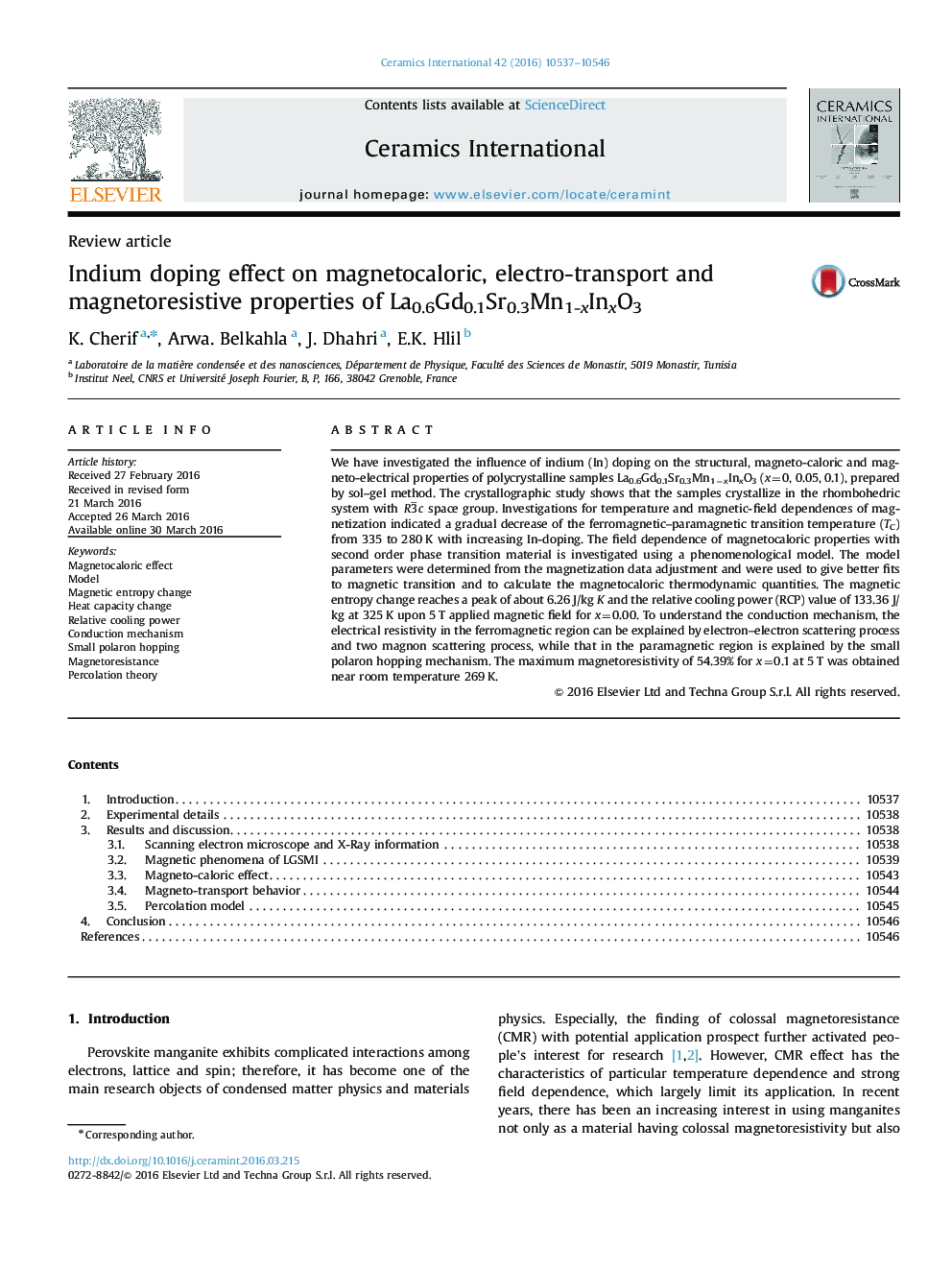| Article ID | Journal | Published Year | Pages | File Type |
|---|---|---|---|---|
| 1458588 | Ceramics International | 2016 | 10 Pages |
We have investigated the influence of indium (In) doping on the structural, magneto-caloric and magneto-electrical properties of polycrystalline samples La0.6Gd0.1Sr0.3Mn1−xInxO3 (x =0, 0.05, 0.1), prepared by sol–gel method. The crystallographic study shows that the samples crystallize in the rhombohedric system with R3̅c space group. Investigations for temperature and magnetic-field dependences of magnetization indicated a gradual decrease of the ferromagnetic–paramagnetic transition temperature (TC) from 335 to 280 K with increasing In-doping. The field dependence of magnetocaloric properties with second order phase transition material is investigated using a phenomenological model. The model parameters were determined from the magnetization data adjustment and were used to give better fits to magnetic transition and to calculate the magnetocaloric thermodynamic quantities. The magnetic entropy change reaches a peak of about 6.26 J/kg K and the relative cooling power (RCP) value of 133.36 J/kg at 325 K upon 5 T applied magnetic field for x=0.00. To understand the conduction mechanism, the electrical resistivity in the ferromagnetic region can be explained by electron–electron scattering process and two magnon scattering process, while that in the paramagnetic region is explained by the small polaron hopping mechanism. The maximum magnetoresistivity of 54.39% for x=0.1 at 5 T was obtained near room temperature 269 K.
